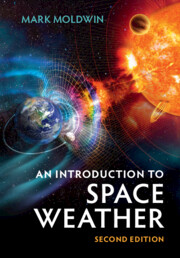Refine search
Actions for selected content:
9 results
Self-oscillations of the two-jet collimated astrosphere: new type of instability
-
- Journal:
- Publications of the Astronomical Society of Australia / Volume 42 / 2025
- Published online by Cambridge University Press:
- 24 July 2025, e123
-
- Article
-
- You have access
- Open access
- HTML
- Export citation
Probing interplanetary scintillation using broadband VLBI
-
- Journal:
- Publications of the Astronomical Society of Australia / Volume 42 / 2025
- Published online by Cambridge University Press:
- 16 April 2025, e055
-
- Article
-
- You have access
- Open access
- HTML
- Export citation
Effects of angular scattering and H+p, H+H collisions on the properties of interstellar atoms in the heliosphere
-
- Journal:
- Publications of the Astronomical Society of Australia / Volume 42 / 2025
- Published online by Cambridge University Press:
- 14 April 2025, e045
-
- Article
-
- You have access
- Open access
- HTML
- Export citation
The global structure of astrospheres: Effect of Knudsen number
-
- Journal:
- Publications of the Astronomical Society of Australia / Volume 41 / 2024
- Published online by Cambridge University Press:
- 11 July 2024, e074
-
- Article
- Export citation

An Introduction to Space Weather
-
- Published online:
- 12 November 2022
- Print publication:
- 01 December 2022
-
- Textbook
- Export citation
Long-term variations in the heliosphere
-
- Journal:
- Proceedings of the International Astronomical Union / Volume 13 / Issue S340 / February 2018
- Published online by Cambridge University Press:
- 27 November 2018, pp. 108-114
- Print publication:
- February 2018
-
- Article
-
- You have access
- Export citation
Collisionless shocks and particle acceleration: Lessons from studies of heliospheric shocks
-
- Journal:
- Proceedings of the International Astronomical Union / Volume 6 / Issue S274 / September 2010
- Published online by Cambridge University Press:
- 08 June 2011, pp. 214-219
- Print publication:
- September 2010
-
- Article
-
- You have access
- Export citation
Analysis of the ICME on 24 August 2001
-
- Journal:
- Proceedings of the International Astronomical Union / Volume 4 / Issue S257 / September 2008
- Published online by Cambridge University Press:
- 01 September 2008, pp. 295-297
- Print publication:
- September 2008
-
- Article
-
- You have access
- Export citation
Heliospheric Magnetic Fields, Energetic Particles, and the Solar Cycle
-
- Journal:
- International Astronomical Union Colloquium/ Volume 179 /
- pp. 431-437
-
- Article
- Export citation




